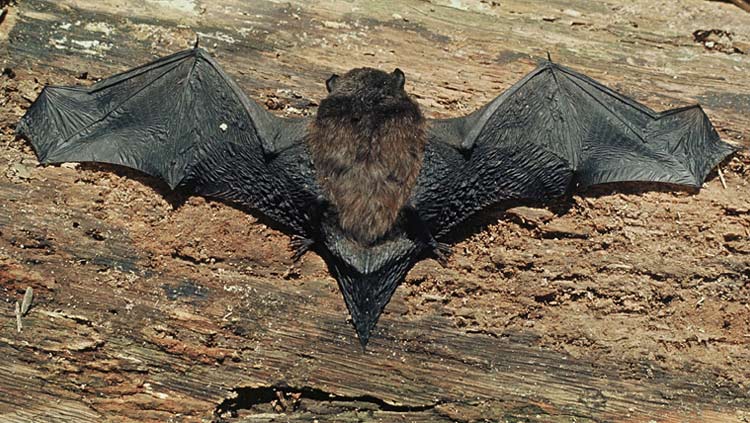Chalinolobus
Chalinolobus gouldii
Chalinolobus is a bat species from the family of Myotis bats ( Vespertilionidae ). The genus includes seven species that live in Australia, New Zealand and the Western Pacific.
These bats can reach a body length 42-75 mm, a tail length of 32-60 mm and a weight of 4 to 18 grams. Their fur is usually dark brown or black in color, sometimes with a reddish tint. A characteristic feature are wart-like growths on the mouth.
These bats sleep in the dense foliage, tree hollows, caves or mines, they thereby form groups of 30 to several hundred animals. These groups are long-lived compounds in which live together especially females of several generations. Males hold the other hand usually only briefly in such groups. Like most other bats, they are nocturnal, and leave in the evening their resting places to hunt insects. Often they are found in the vicinity of water.
Mating usually takes place at the beginning of winter in July, after which the animals fall into a brief hibernation ( torpor ). The seed of the male is kept in the reproductive tract for fertilization occurs only in September and October. After three months of gestation period come a November to February or two pups. In warm regions, however, it is equal to fertilization, in these areas the pups are born from September to December.
It distinguishes seven types:
- Chalinolobus gouldii inhabits the whole of Australia
- Chalinolobus neocaledonicus lives on Norfolk Island and New Caledonia. Due to the destruction of their habitat, the species is very rare or possibly extinct.
- Chalinolobus morio is native to southern Australia and Tasmania.
- Chalinolobus picatus lives in the east and south-east Australia.
- Chalinolobus nigrogriseus inhabited New Guinea and northern Australia.
- Chalinolobus dwyeri is native to a small area on the east coast of Australia. Because of their small distribution range, the species is considered endangered.
- Chalinolobus tuberculatus is endemic to New Zealand. In addition to the New Zealand bats, it is the only living on this island group of bat. Also it is considered endangered.










